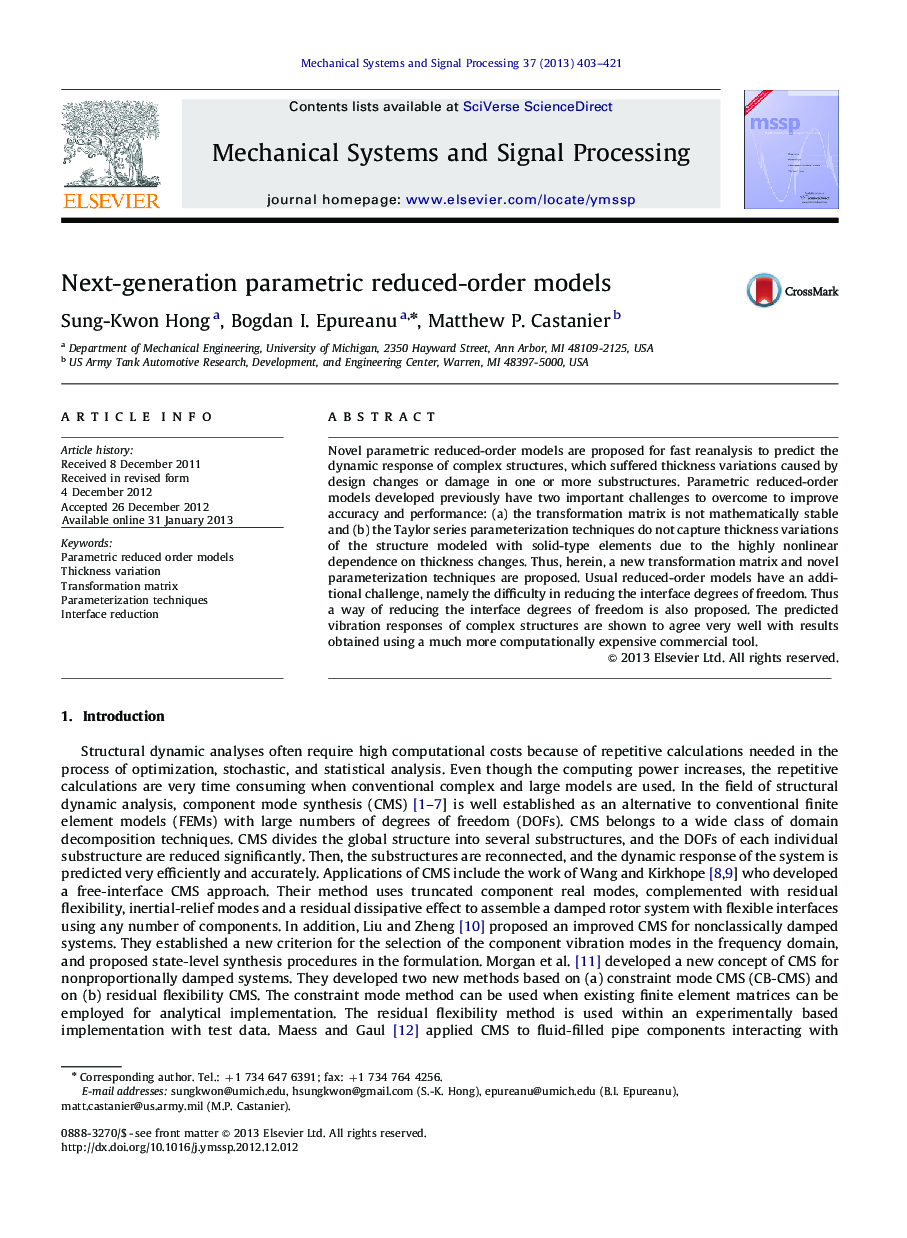| Article ID | Journal | Published Year | Pages | File Type |
|---|---|---|---|---|
| 561278 | Mechanical Systems and Signal Processing | 2013 | 19 Pages |
Novel parametric reduced-order models are proposed for fast reanalysis to predict the dynamic response of complex structures, which suffered thickness variations caused by design changes or damage in one or more substructures. Parametric reduced-order models developed previously have two important challenges to overcome to improve accuracy and performance: (a) the transformation matrix is not mathematically stable and (b) the Taylor series parameterization techniques do not capture thickness variations of the structure modeled with solid-type elements due to the highly nonlinear dependence on thickness changes. Thus, herein, a new transformation matrix and novel parameterization techniques are proposed. Usual reduced-order models have an additional challenge, namely the difficulty in reducing the interface degrees of freedom. Thus a way of reducing the interface degrees of freedom is also proposed. The predicted vibration responses of complex structures are shown to agree very well with results obtained using a much more computationally expensive commercial tool.
► Next-generation parametric reduced-order models for structural dynamic problem. ► A new parameterization technique to capture the element-level nonlinearity. ► A new transformation matrix with a novel interpolation of static constraint modes. ► A local-interface reduction for further enhancing the computational efficiency.
